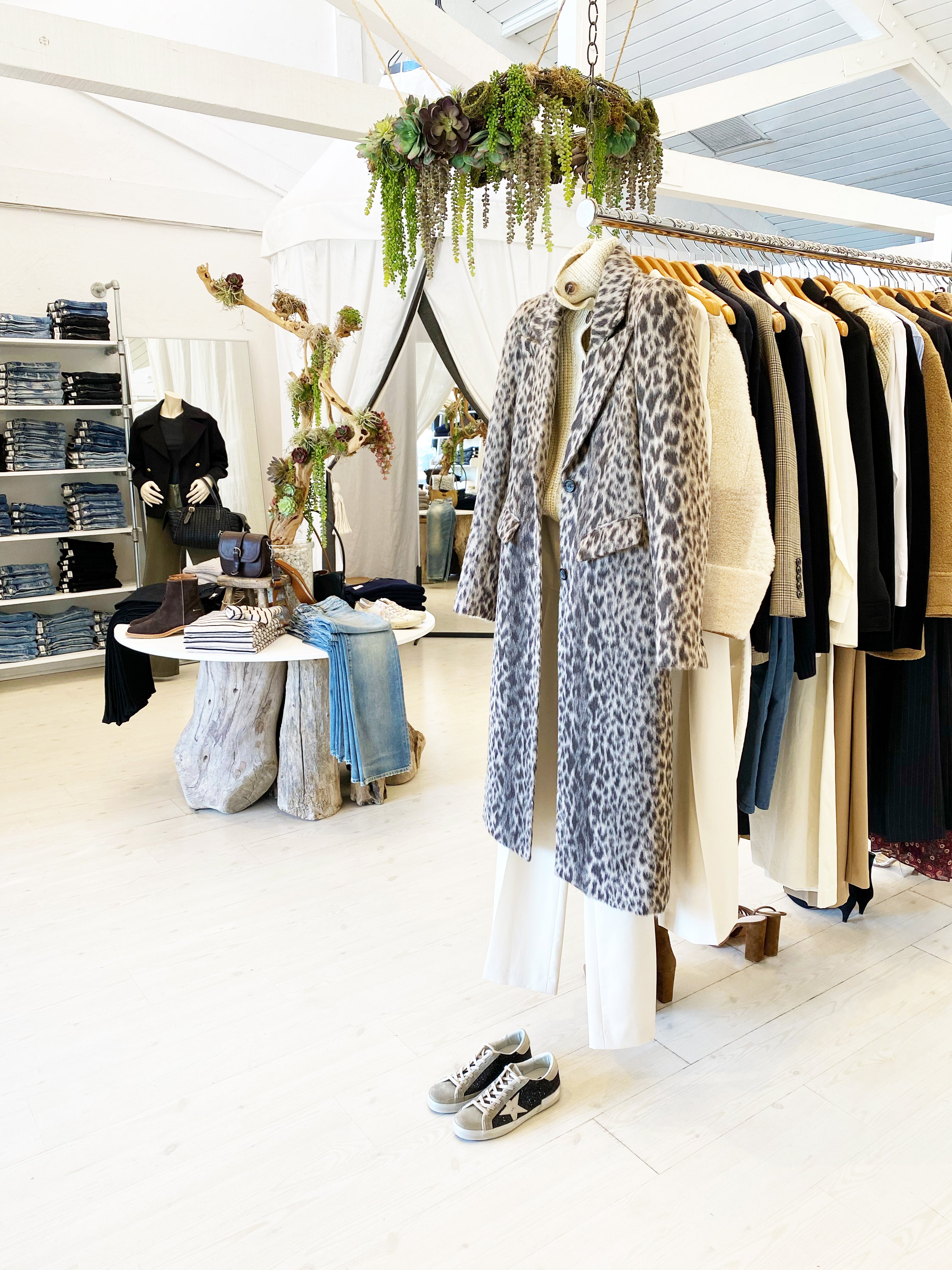The Increase of Online Buying: Finding Boutique Fashion at Your Fingertips
The Increase of Online Buying: Finding Boutique Fashion at Your Fingertips
Blog Article
Sustainable Fashion: Just How Eco-Friendly Clothing Is Shaping the Future of Design
As the garment industry deals with raising analysis over its ecological impact, the rise of sustainable fashion supplies an appealing option that straightens design with eco-friendly duty. Employing ingenious materials such as plant-based materials and recycled fibers, along with advanced methods like digital and 3D printing, designers are redefining what it means to be trendy in the modern-day age. Simultaneously, the expanding appeal of upcycling and second hand society is cultivating a change in the direction of a round economy. Yet, exactly how does this motion absolutely influence the future trajectory of fashion, and what challenges lie in advance in its extensive adoption?
Ingenious Lasting Products
As the fashion sector grapples with its ecological impact, cutting-edge lasting products have arised as a vital service for lowering ecological footprints. These products not just lower dependence on fossil fuels however also decrease harmful chemical usage and water usage.
Along with plant-based products, innovations in biofabrication have actually led to the advancement of lab-grown fabrics. Mycelium natural leather, derived from mushroom roots, provides a naturally degradable and functional choice to pet leather. Its production results in considerably lower carbon exhausts and water use, making it a more lasting option for designer looking for to align with green practices.
Recycled products are also acquiring traction, with polyester made from recycled plastic containers standing for a substantial innovation. This innovation not just draws away plastic waste from seas and landfills yet additionally minimizes power consumption contrasted to generating virgin polyester. Together, these products emphasize the capacity for an extra lasting garment industry, leading the way for ecologically mindful design and manufacturing.
Eco-Conscious Manufacturing
Building on the technologies in sustainable materials, the style industry is likewise re-evaluating its manufacturing processes to further decrease environmental effect. Trick methods include lessening water consumption, decreasing carbon exhausts, and eliminating dangerous chemicals.
Another crucial facet is the decrease of harmful chemicals generally used in coloring and finishing textiles. Eco-conscious makers are moving in the direction of plant-based dyes and waterless dyeing innovations, which not just guard local ecological communities but additionally boost employee safety. Advancements like electronic printing minimize textile waste and power intake, offering a cleaner alternative to typical methods.
Furthermore, transparency and traceability have ended up being critical. With the innovation of blockchain modern technology, firms can currently provide detailed understandings into their supply chains, ensuring environmentally friendly and ethical practices at each step. This openness constructs consumer trust and urges brand names to preserve high sustainability requirements. As the demand for eco-conscious items expands, suppliers are urged to introduce, making sure that the future of style is both sustainable and stylish.
The Rise of Upcycling
Upcycling, a transformative practice in lasting fashion, includes creatively repurposing thrown out materials right into new, top quality items. This ingenious method not only lowers waste however additionally decreases the need for resources, thus lessening the ecological impact of garments production. By reconstructing and reimagining existing products, developers and style brands have the ability to infuse creativity right into their collections while promoting environmental duty.

Moreover, the upcycling motion has encouraged small companies and independent designers, who often find more info lead in development because of their agility and creativity. By taking advantage of the bountiful schedule of extra materials, these entities add to a round economic situation, showing that fashion can be both sustainable and fashionable. Via upcycling, the sector takes considerable strides in the direction of an extra liable and aware future.
Thrift Society's Impact
The blossoming thrift society substantially improves the landscape of sustainable style, highlighting the value of conscious intake. This cultural shift motivates consumers to embrace previously owned garments, therefore minimizing the need for new garment production and reducing ecological influence. Thrift shopping not just expands the lifecycle of garments yet also reduces the carbon footprint connected with manufacturing, moving, and taking care of garments.
A vital facet of second hand culture is its democratization of style. By using a large selection of designs from numerous ages at inexpensive rates, thrift shops make fashion easily accessible to a wider target market. This accessibility cultivates a sense of individuality and imagination, as customers mix and match special pieces to curate customized wardrobes without adding to the fast style cycle.
In addition, second hand culture promotes circularity in vogue, lining up with the concepts of a circular economy. By recirculating garments, the cycle of waste is disrupted, and sources are conserved. This method supports a change from a direct "take-make-dispose" version to an extra lasting structure. As more customers and designers welcome thrift More hints culture, the apparel industry is forced to adjust, incorporating sustainable practices to satisfy the growing need for eco-conscious choices.

Future Trends in Fashion
Style's advancement is increasingly formed by sustainability-driven initiatives and technical technologies. One noticeable fad is the increase of digital style, where virtual garments can be worn in augmented fact environments, significantly lowering material waste.
Additionally, the integration of blockchain modern technology uses new possibilities in transparency and traceability, permitting customers to confirm the sustainability qualifications of their garments. boutique fashion. This makes certain responsibility in supply chains and advertises ethical sourcing methods. 3D printing is yet another development that promises to reinvent manufacturing processes by making it possible for on-demand production, thus reducing excess inventory and waste
Furthermore, the advancement of bio-fabricated materials, such as lab-grown natural leather and plant-based fabrics, offers lasting options to typical products. These technologies decrease reliance on pet items and resource-intensive crops. As these modern technologies develop, they are poised to transform the style landscape, merging design with sustainability. The future of fashion, consequently, exists in a seamless blend of technology, the original source development, and environmental duty.
Verdict
The change of the garment industry through sustainable methods suggests a critical shift towards ecological accountability. The assimilation of cutting-edge products, eco-conscious manufacturing methods, and the embracement of upcycling and thrift culture highlights a commitment to lowering ecological footprints. As these techniques gain energy, they redefine the market's narrative by prioritizing moral and sustainable selections. This evolution not just straightens style with ecological sustainability however likewise sets a criterion for future patterns concentrated on duty and development.
As the fashion market encounters increasing analysis over its environmental effect, the surge of lasting fashion offers a promising alternative that aligns style with environmental responsibility.As the style industry grapples with its environmental effect, cutting-edge lasting products have emerged as an essential service for lowering eco-friendly footprints. Together, these products emphasize the capacity for a more lasting fashion sector, leading the means for environmentally conscious design and manufacturing.
Structure on the innovations in lasting materials, the style sector is additionally re-evaluating its manufacturing processes to better decrease ecological influence. boutique fashion.Upcycling, a transformative method in lasting style, involves artistically repurposing thrown out materials into brand-new, high-grade items
Report this page